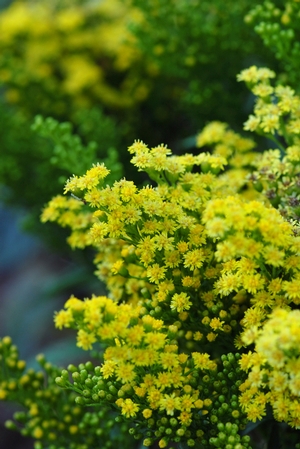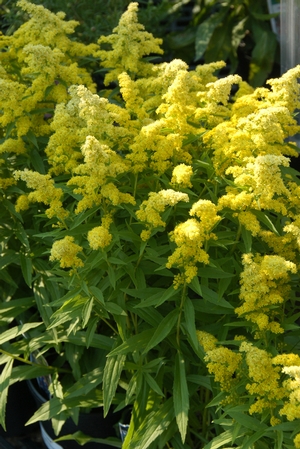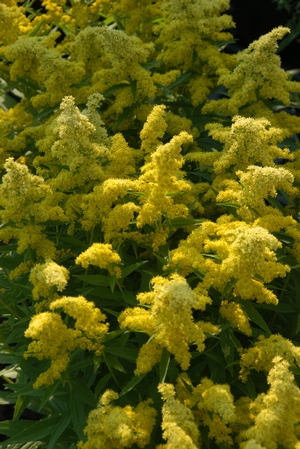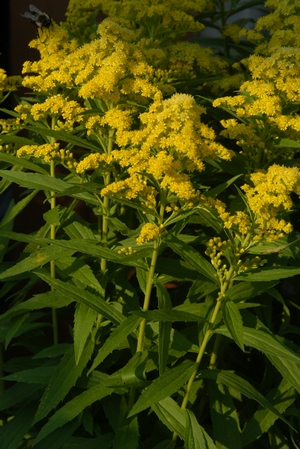Solidago Little Lemon® 'Dansolitlem'
Common: goldenrod — PP17297Solidago 'Little Lemon' PP17297 - 50 per flat
- Height: 12"-18"
- Spread: 18"-24"
- Spacing: 12"-18"
- Hardiness Zone(s): 4-9


Solidago 'Little Lemon' PP17297 - 50 per flat



This diminutive beauty is exceptionally compact with bright, light yellow flowers beginning in late summer and lasting well into fall. Great shelf life! It is versatile, easy to grow and combines well with purple and pink asters both in the garden and in a container. Great as a cut flower, it is also very attractive to butterflies.
Grow in full sun and average to moist soil. Water well on planting and regularly for the first season. Drought tolerant once established.
Convincing gardeners to grow goldenrods is a bit like trying to sell Toyotas in Detroit, but I will continue anyway. They are certainly ubiquitous in the fall landscape and are still wrongly accused of causing hayfever. Therefore, it bears repeating that goldenrods, like aster, Joe-Pye, ironweeds, and all the Composites, are insect-pollinated, so their pollen is heavy and sticky in order to facilitate transfer by our six-legged friends. It is the wind-pollinated plants like grasses, ragweed and many trees (I am allergic to maples for example) that produce the great quantities of light, airborne pollen that get into our noses and throats and cause the immune reaction known as hayfever. There are goldenrods for every situation, and if you avoid the aggressively weedy species like S. canadensis (My apologies to Canada) and S. graminifolia, they are agreeable garden subjects at home in the border, meadow, rock, or shade garden. Once I started to learn the different species, I became more and more aware of their subtle differences and convinced of their important role in native ecosystems as soil stabilizers and sources of food and shelter for wildlife. They are beautiful in leaf and flower, too, and no wildflower garden is complete without a few of our hundred or so species scattered around. - William Cullina, The New England Wild Flower Society Guide to Growing and Propagating Wildflowers, p. 197